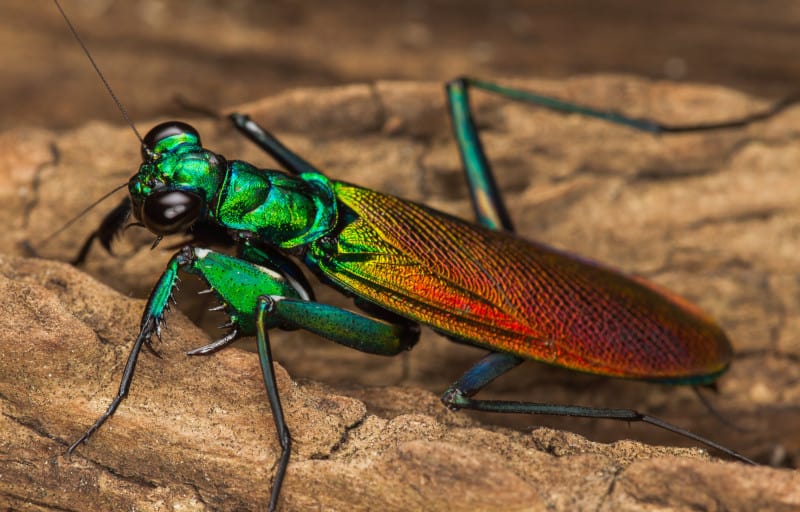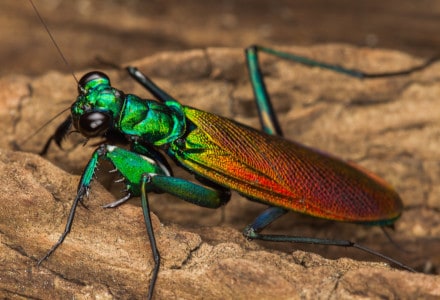
Iridescent Bark Mantis Facts
- Most notably, the breathtaking Iridescent Bark Mantis fully earns its common name. Most related mantids display bland coloring, to act as camouflage, yet this invertebrate goes the opposite route.
- Rather surprisingly, the IUCN does not yet have a classification for this amazing species. However, most experts consider it to be threatened, as its numbers appear to be scant in the wild.
- But it does not rely on appearance alone to set it apart from its brethren. Moreover, the majority of mantis varieties practice cannibalism. But, this one does not appear to do so.
Related Articles
Iridescent Bark Mantis Physical Description
Certainly, the gorgeous Iridescent Bark Mantis displays a modest degree of sexual dimorphism. Due to this, in its case, the females generally attain a slightly larger size than the males.
Therefore, the slightly larger female reaches an average length of about 1.6 in (4 cm). So, the smaller male of this magnificent species typically attains a length of about 1.4 in (3.5 cm).
But it is the coloring of the invertebrate that represents its most memorable feature. Further, patterns of color, as well as the colors themselves vary significantly between individuals, but iridescent colors remain paramount.
- Kingdom: Animalia
- Phylum: Euarthropoda
- Class: Insecta
- Order: Mantodea
- Family: Metallycidae
- Genus: Metallyticus
- Species: M. splendidus
Iridescent Bark Mantis Distribution, Habitat, and Ecology
The dazzling Iridescent Bark Mantis has a moderately large range, yet its populations appear fragmented. More specifically, however, it inhabits a range that includes much of southeast Asia.
Also, within this range, it typically inhabits regions of both temperate and tropical forest. There, it likes to rest under the bark of host trees, awaiting its unsuspecting prey.
But unlike most mantids, it does not feed as an ambush predator. Above all, this beautiful invertebrate prefers to pursue its prey. This usually consists of termites, butterflies, flies, and especially cockroaches.
Species Sharing Its Range
Check out our other articles on Earth’s Many Stunning Waterfalls, Giant Manta Ray, Lava Cactus, Belogradchik Rocks, Eastern Diamondback Rattlesnake, Regal Moth

